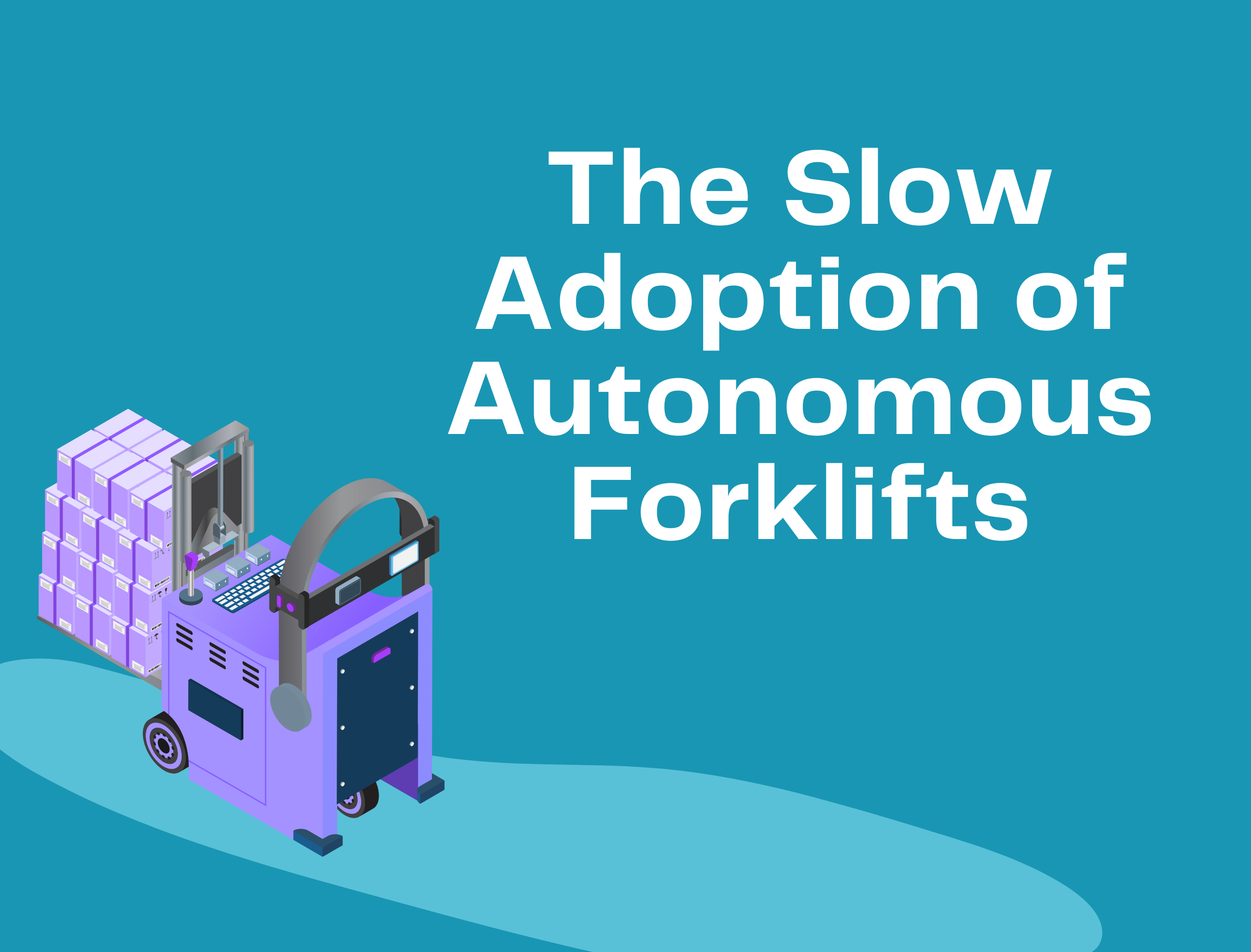Updated: September 16th, 2025 | 3 min read
Slow Adoption of Autonomous Forklifts: Navigating the Real-World Challenges
Autonomous forklifts have been touted as a game-changer for warehouse operations. But the reality is, they haven’t exactly taken the industry by storm. This topic has been on my mind lately, as it keeps coming up in conversations with my contacts and partners. Just last week, I was chatting with a long-time colleague who oversees logistics strategies and operations for a major retailer, and he echoed what I’ve been hearing from other industry leaders: there are still some serious hurdles to overcome.
This lag can be primarily attributed to two significant factors: low manufacturing numbers and complex software integration.
Low Manufacturing Numbers
One of the primary hurdles in the widespread adoption of autonomous forklifts is the limited production scale and sophistication of technology. Unlike traditional forklifts, which are manufactured in large quantities, autonomous forklifts are still produced in relatively small numbers, which keeps costs high and makes it challenging for many companies to justify the investment.
And let’s face it, these robots are still pretty pricey. Manufacturing autonomous forklifts involves sophisticated technology and precision engineering. The sensors, cameras, and software systems required for these machines to operate autonomously are expensive and require specialized expertise to develop and integrate. Paired with the natural economics of an emerging market, manufacturers are cautious about ramping up production until there is more substantial demand. It’s a classic chicken-and-egg problem.
Complex Software Integration
Even if you can afford the upfront cost, getting these robots to work seamlessly with your existing warehouse systems is another beast altogether.
Autonomous forklifts need to be seamlessly integrated with existing warehouse management systems (WMS), warehouse execution systems (WES), and other intra-logistics software platforms. This integration is not straightforward and requires substantial customization and technical expertise.
In my experience, many warehouses have legacy systems in place that are not designed to interact with modern autonomous technologies. It’s like trying to fit a square peg in a round hole. You either have to overhaul your entire tech setup, which is expensive and time-consuming, or build custom software to bridge the gap. Neither option is ideal.
On top of that, the software running these robots is complex and needs constant updates. It needs to be capable of handling a variety of scenarios, from navigating tight spaces to managing unexpected obstacles. It’s not just about getting them to move around; they need to be smart enough to handle unexpected situations. This requires continuous software updates and improvements, further adding to the complexity and cost of implementation.
Looking Ahead
Despite these challenges, the future of autonomous forklifts in intra-logistics remains promising. As technology continues to advance and manufacturing processes become more efficient, the cost of producing autonomous forklifts is expected to decrease. This will make them more accessible to a broader range of businesses.
Advancements in software development and integration will gradually reduce the complexity associated with implementing these systems. Companies specializing in intra-logistics technology, like Onomatic, are continuously working on solutions to streamline the integration process and enhance the interoperability of various systems.
It’s clear that widespread adoption of autonomous forklifts will be a gradual process. Companies that start exploring these technologies now, even on a small scale, can position themselves to take full advantage of the efficiency and productivity gains once these systems become implemented and the market matures.
Ready to overcome warehouse automation challenges?
Contact Onomatic today to learn how our MAO platform can help you optimize your operations.

